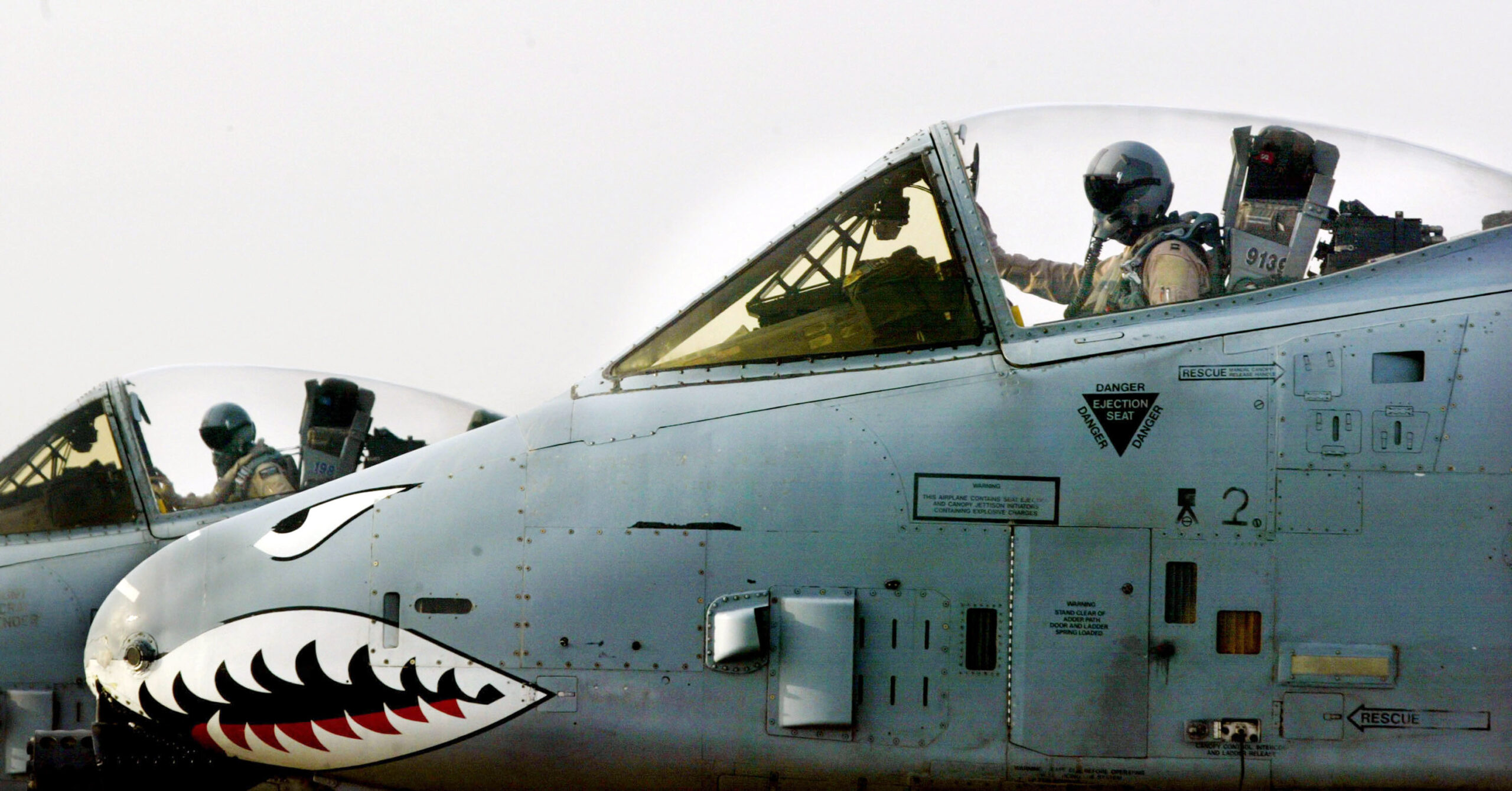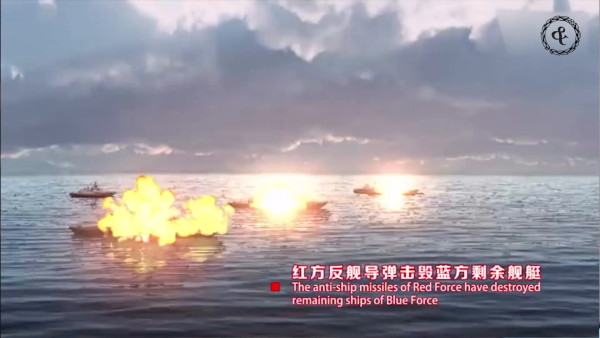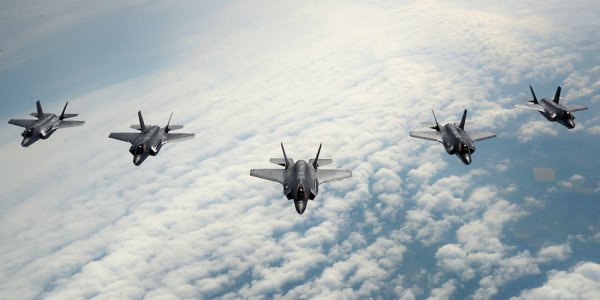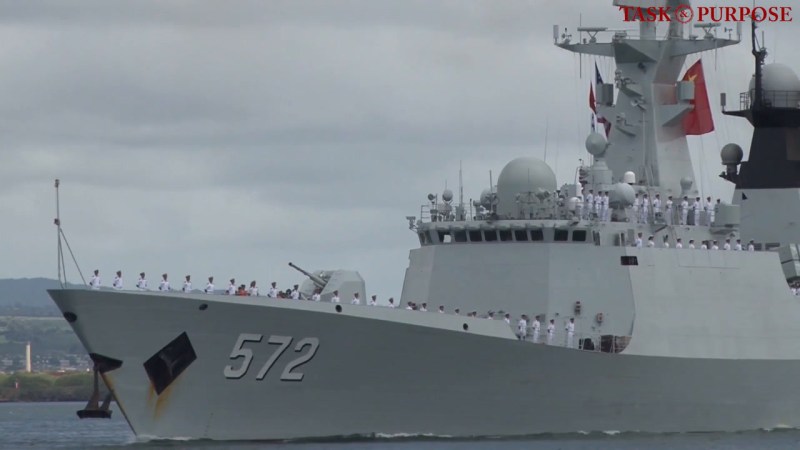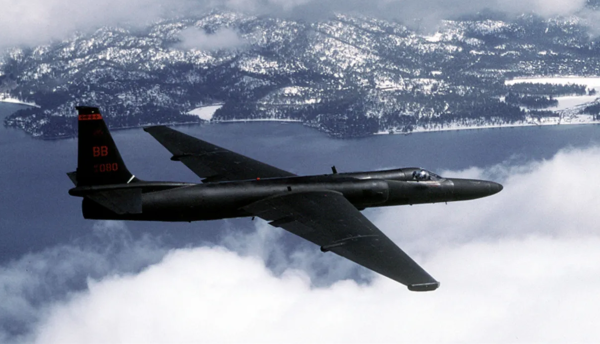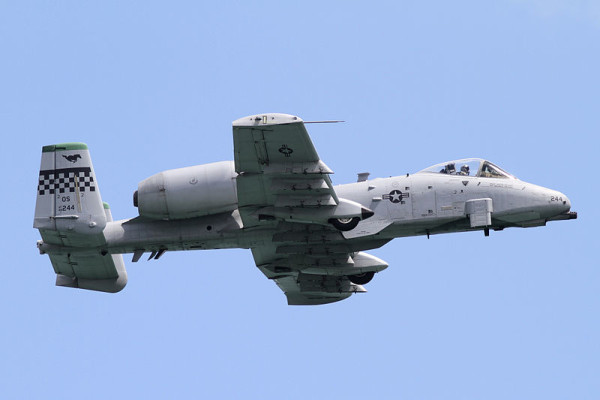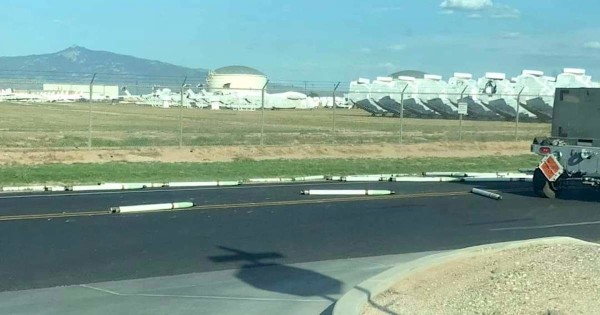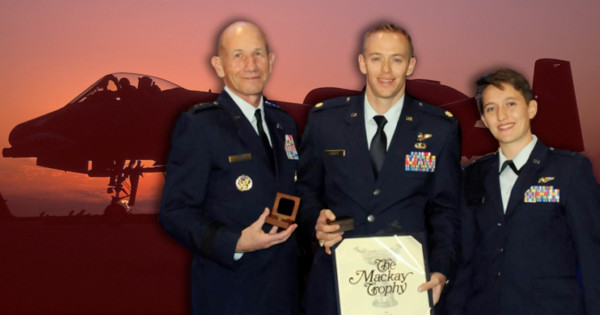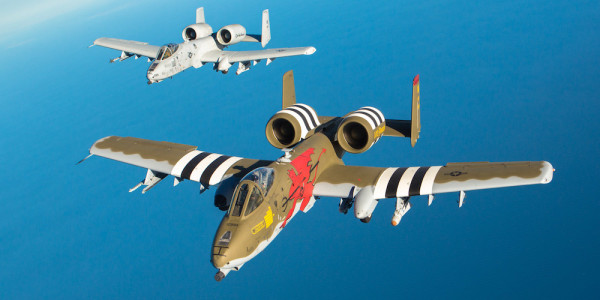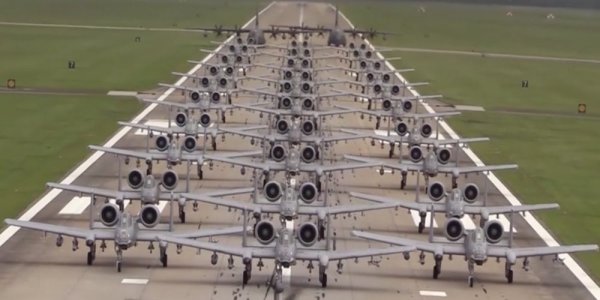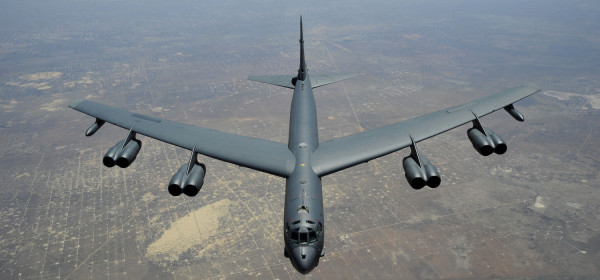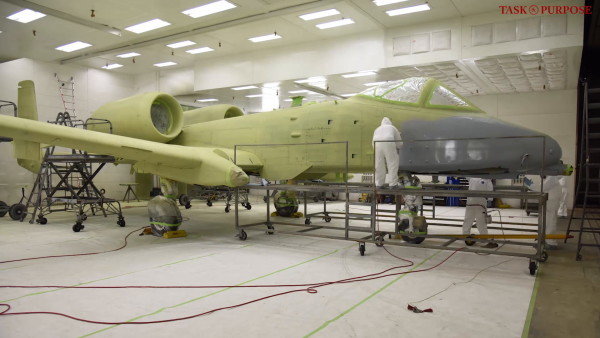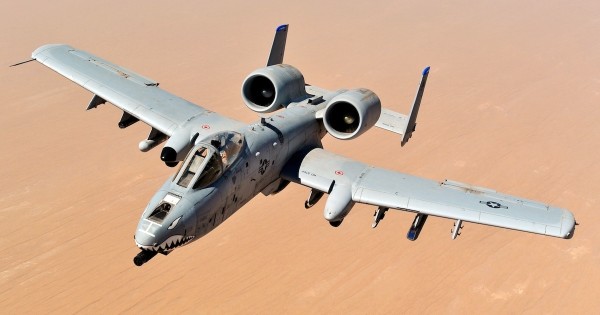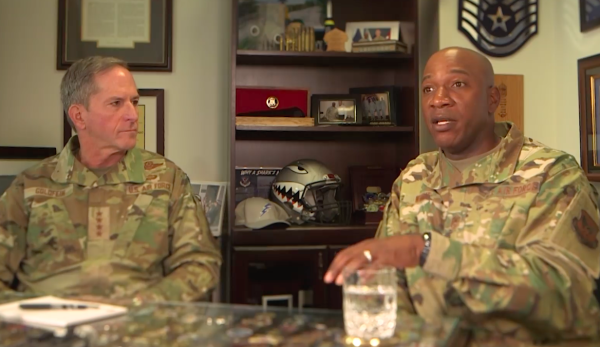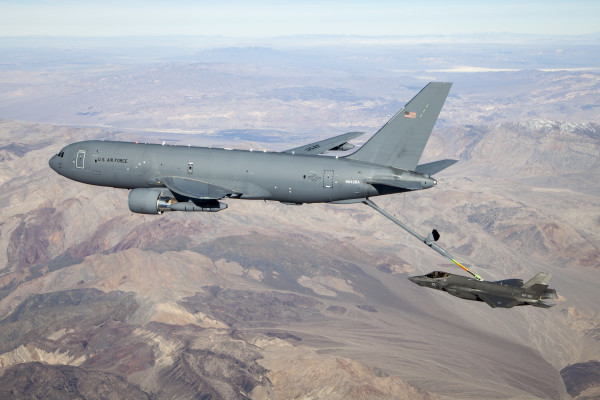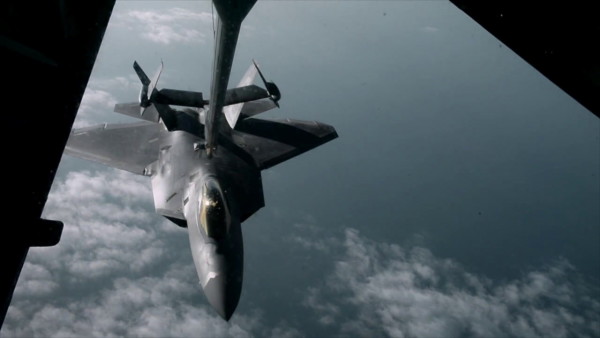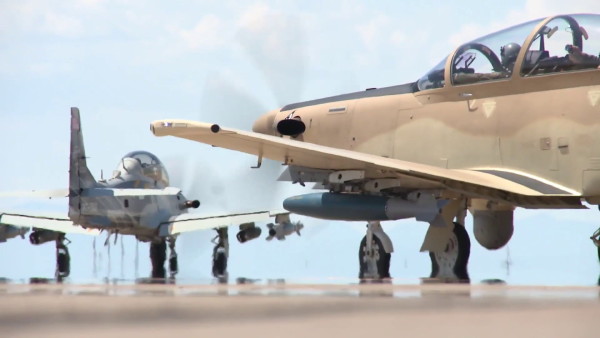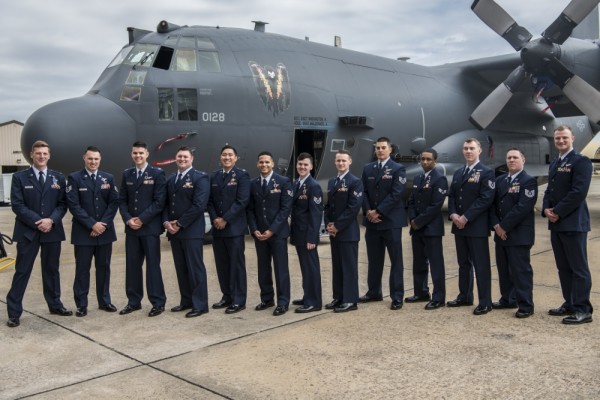Throughout my 10-year flying career in the United States Air Force, the A-10C Thunderbolt II, affectionately dubbed the Warthog, has been the subject of divestment. There is a joke amongst the A-10 community that discussions of getting rid of the A-10 started 2.5 minutes after the last one rolled off the Fairchild-Republic assembly line in 1984. Despite such quips, there is one resounding fact that defines our community; the mission comes before the plane. Now don’t get me wrong, with more than 2,000 hours and two deployments in the A-10, I love the jet with all my heart. But the mission will always come first. So herein lies the paradox: how does a jet under constant threat of divestment adapt and evolve to support the ever-changing mission?
In August of 2020 Air Force Chief of Staff Gen. C.Q. Brown published a white paper titled “Accelerate Change or Lose,” wherein he asserts that for the Air Force to retain the ability to project power and establish air supremacy anywhere in the world, we must embrace rapid growth and adaptability. Gen. Brown followed his white paper up with action orders, published in December 2020 and revised in February 2022. The action orders were a charge to Air Force leaders to embrace the ideas laid out in the paper, stating “these action orders provide the what. It’s the way we address these action orders that will provide the how. It is all of us … our talented airmen … that are key to cutting unnecessary bureaucracy, recognizing and understanding our competition, and thinking of creative ways we can reshape the design of our Air Force.” With Brown’s charge in mind, the A-10 community set out to analyze and identify how to support the Air Force’s strategic, operational, and tactical goals.
The notion of integrating stand-off weapons (SOWs) on the A-10 was first hatched 10 years ago, but never gained traction due to the threat of divestment. Now, a decade later, and congressionally mandated to remain in service despite divestment efforts in each of the last 10 budget requests, the idea of integrating SOWs on the A-10 was revisited. In July 2021, a group of A-10 tactical experts gathered ‘round the infamous Hog Trough — an informal gathering area where A-10 pilots and crew have mission-related discussions — and postulated on how the A-10C could better help our 4th, 5th, and soon to be 6th-gen brothers and sisters win in the air. The first proposal was the ADM-160 Miniature Air-Launched Decoy, also known as MALD. Carried by the F-16 and B-52, the MALD is a low-cost combat capability that offers mission and combatant commanders the opportunity to saturate an air defense picture and increase the survivability of our 5th-gen assets. When planned and utilized properly, a few dozen decoys can wreak havoc on the defenses of a sophisticated potential enemy like Russia or China.
The A-10C has up to 10 weapons stations available. In today’s Air Force, where new fighters have fewer weapons stations in order to prioritize internal carriage and stealth, the A-10’s sheer volume of available weapons stations is a force multiplier. The MALD weighs about 300 pounds and has a range of approximately 500 miles. It is programmable and aims to duplicate the signatures and flight profiles of combat aircraft, inducing confusion and noise into the enemy air defense picture and complicating their tactical decision-making. A single MALD can be loaded directly onto a station, or two MALD can be loaded on a triple-ejector rack. This enables a single A-10 to carry up to 16 MALD, which is as many as a B-52 can hold and 12 more than an F-16 can. To further break it down, a four-ship formation of A-10s could bring up to 64 MALD to a fight. The A-10’s robust, agile combat employment capabilities (low maintenance footprint and ability to operate from unimproved or makeshift runway surfaces) combined with the ability to carry 16 MALD per aircraft, provides combatant commanders the ability to create multi-axis problems, target saturation, and horizontal escalation options for adversaries. No software integration with the jet’s central computer is required. Carriage and separation testing is the only cost to consider.

After about seven months of research, building a roadmap, rallying A-10 community support and being told ‘no’ at least 50 times, the 127th Wing from Selfridge Air National Guard Base, Michigan, borrowed some load-training versions of the MALD and ground fit checked the ADM-160 on the A-10C at Volk Field Air National Guard Base, Wisconsin. This happened the same day the A-10 chief engineer signed off on the project. The motivation, creativity, and perseverance of our airmen, paired with a mission-oriented community proved that we can accelerate change. Hopefully, the effort will gain the support of Air Combat Command (ACC) and Headquarters Air Force (HAF). With their support, the MALD can go through separation testing and complete its integration on the A-10 in the next few months. Integration of the MALD on the A-10C provides a unique method to use the austere capabilities of the airframe to increase the survivability of every aircraft in the fight.
The second proposal, the AGM-158 Joint Air-to-Surface Standoff Missile or JASSM, is the next step in the A-10’s evolution of mission support. The JASSM is a low-observable, air-launched cruise missile, which has become so strategically important to combatant commanders, that it has been integrated onto the F-15E, F-16, F/A-18, F-35, B-1, B-52, and even the B-2. Initial assessments and theorizing suggests that the A-10 could potentially carry four to five of the missiles. For comparison, the F-15E is the only fighter that can carry more than two JASSM (the Strike Eagle can carry up to five JASSM), while the bomber fleet can carry between 12 and 24 of the munitions, depending on the platform. Although this may not have the same sticker shock associated with the MALD, the A-10 can offer combatant commanders an additional four to five JASSM per sortie, and leverage integrated combat turns (ICTs) to increase sortie production. Risk mitigation demands more SOWs employment, and the carriage capacity combined with the quick-turn capability of the A-10C should be considered as a means to increase the Mass the USAF can provide to a combatant commander. This is not about taking the JASSM away from bombers and other fighters. This is about bringing more weapons to bear in a shorter span of time, which is a critical component of massing fires.
The A-10 is not a nuclear-capable asset, so deployment should not carry the same level of strategic threat as assets that are nuclear-capable. This provides an opportunity for combatant commanders to forward stage long range fires without potentially triggering a change in strategic posture. Unlike the MALD, the JASSM will require software integration in addition to ground fitting and separation testing, however, given the fact that the A-10 and the JASSM are currently available, with support, the timeline could encourage rapid capability offerings to combatant commanders to integrate into plans right away.
Imagine a rapidly-deployable force of non-nuclear fighters that can operate from the most austere locations with a minimal footprint while providing long range fires, decoys, electronic attack, and mission support. That vision is achievable at minimal cost by using assets and capabilities that the Air Force already has, but simply needs to integrate. That is what stand-off weapon integration on the A-10 can provide to combatant commanders.
In the end, should we be called to militarily defend democracy and the freedoms we hold dear, we are going to fight with the force we have, not the force we want. Without a suitable replacement aircraft, the A-10 is likely to remain a congressionally-mandated part of the Air Force, as noted in Gen. Brown’s “4+1” fighter force structure. The integration of the MALD and the JASSM are merely two ways the A-10 community is evolving to best support the Air Force in future fights. Gen. Brown charged airmen with embracing the idea of thinking outside the box and working to counter our adversaries with new and unique methods. The innovative spirit and “get it done” attitude of the A-10 community is an example of accelerating change to not lose. Good luck to our adversaries trying to sort and pick through the 64 MALD delivered by a four-ship flight of A-10s.
The latest on Task & Purpose
- An Air Force general wants to ‘robust’ Guam. What the hell does that mean?
- No, Hollywood is not required to screw up military uniforms
- SOCOM finally found its next-generation personal defense weapon
- How the myth that Mr. Rogers was a deadly military sniper began
- Sailors are deserting the Navy at a ‘staggering’ rate
Want to write for Task & Purpose? Click here. Or check out the latest stories on our homepage.
+++
Maj. Maurice “SPAWN” Grosso is an A-10C Weapons Officer with more than 2100 hours of A-10 experience including two combat deployments. He is currently an Instructor in the 66th Weapons Squadron, the A-10C division of the U.S. Air Force Weapons School. The views here are those of the author alone and do not represent the positions of the U.S. Air Force, the Department of Defense, or any part of the U.S. Government.
